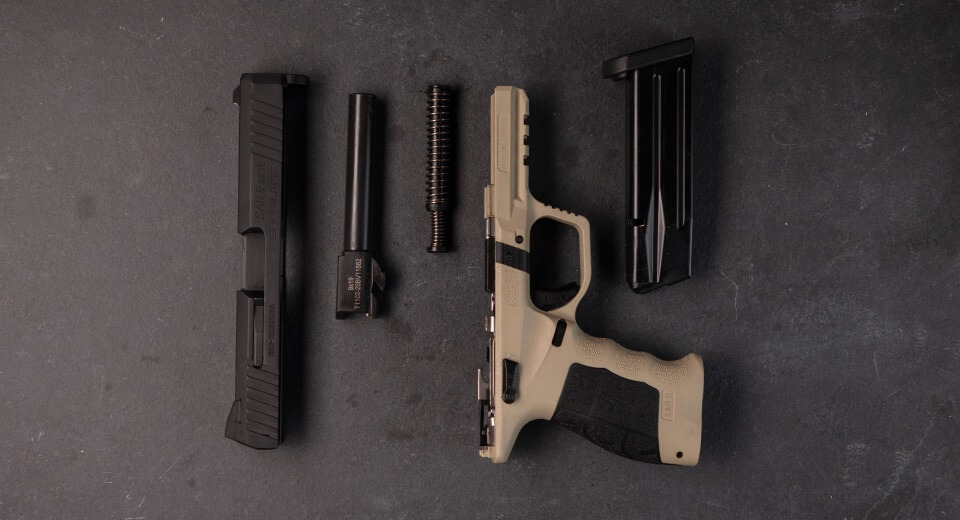What is Caliber?
Obviously, those dealing closely with
guns very well know what “caliber” means. Even if you are not much interested
with firearms, you might somehow have heard the word “caliber” from somewhere,
yet you might not know what it means.
Then, let
us try to explain briefly the meaning of caliber.
Let us
initially start with the definition of the concept of “caliber”. As a matter of
fact, for grooved-ribbed firearms and bullets used therefor, caliber is a unit
of measure just like centimeter, millimeter and corresponds to one hundredth of
an inch. In other words, 1 caliber is 0,01 inches. Indeed, as inch is a widely
used unit of measure mainly used in countries like the US, Canada and the UK,
it might easily be said that this calculation does not mean much in our daily
life. Then, it would be useful to convert all of such measures to the metric
system we are currently using.
Whereas in
hunting rifles, Caliber (Gauge (Ga) or number); is the number of spheres made
of equal size equivalent to 453.6 grams of lead (Pb) with density 11,43 g/cm³
at 15°C. This figure means the nominal size of the barrel and diameter of each
of the said spheres (balls) is equal to the inner diameter of the barrel of the
said caliber.
1 inch
corresponds in the metric system to 2.54 centimeters, in other words to 25.4
millimeters. As we have stated at the very beginning, since 1 caliber is one
hundredth of an inch, caliber corresponds to 0.254 millimeters in the metric
system.
We have
thus set forth the equivalent of caliber as a unit of measure. However, when
firearms are at stake, caliber refers to the diameter and length of the bullet
that could be fired by such gun as well as the barrel diameter of the gun
itself, rather than merely a unit of measure. Consequentially, when we are
referring to the calibers of firearms and bullets, we are generally not talking
about the unit of measure we tried to explain hereinbefore, because measures in
the metric system such as 9-millimter, 10-millimeter and the like are also used
to express the calibers of guns.
From this
viewpoint, caliber is in fact a term used to express the diameters of firearms
and bullets. Gun diameters are measured under three different systems; these
are named as metric calibration, Anglo-American calibration and NATO
calibration systems.
In the
metric measurement system, bullet diameter fired by the gun and Shell length
are expressed in millimeters. For instance, when referring to a 9x19 millimeter
gun, the first number-in other words 9- represents the diameter of the bullet
core in terms of millimeters, whereas the number 19 after “x” means the total length of the
bullet, also in terms of millimeters. This analysis could as well be made for
bullets like 7.65x21, 9x21, 7.62x31 millimeters. While sometimes it is seen
that letters like “R”, “J”, “I”, “S” succeed these numbers. These letters
represent the type, filling method, shape and such similar features ogf the
bullet.
We could at
times possibly encounter calibers not expressed under the metric system. For
instance, expressions like .357, .45, .50 mean the caliber of the gun in terms
of calibers as a unit of measure. It is at this very point that the initially
provided caliber-metric system conversion figures are of essence. Multiplying
the figure in terms of calibers with 0.254 would be giving the millimeter
equivalent of the gun’s caliber. For example, the millimeter equivalent of a
.38 caliber gun would be .38 x 0.254, in other words 9.652 millimeters.
Whereas
NATO calibration means the standards specified by NATO and used on military
firearms used in member countries of NATO. It is aimed to attain harmony
amongst all member countries of NATO.
Different
calibers bear varying advantages as well as disadvantages concerning
utilization. For instance, generally with high caliber bullets have an equally
high –depending also on the weight of the bullet core- destructive power.
Notwithstanding the aforesaid, such power would be affecting other factors like
ramping, serial usage, etc. Therefore, in selecting the caliber, basic
determining element should be the purpose of use of the firearm.
Finally,
let us bring an end to our article by giving some caliber measures. One of the
most preferred calibers worldwide is 9 millimeters, yet there are also several
other standards. It is listed hereinbelow a few of the most favored calibers:
Widely Used Calibers:
.22
.224 / 5,56
mm.
.260 / 6,5
mm.
.284 / 7
mm.
30 / 7,62
mm
9 mm
.38 / .357
.40 / 10
mm.
.45
.50
 KAPAT
KAPAT
 Sarsılmaz'a Bakış
Sarsılmaz'a Bakış






















